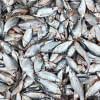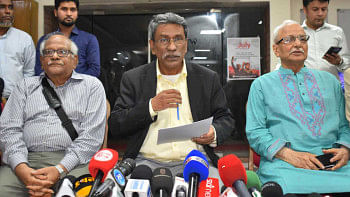Hatcheries fall on hard times amid rising costs

Although Chanchra union in Jashore is the biggest source of fish fry in Bangladesh, local hatcheries are struggling in face of higher input costs and changing climate conditions, according to industry people.
The hatchery business in Chanchra performs a vital role in the economy by catering to 70 percent of the demand for fish fry while also providing a significant number of employment opportunities.
However, the hatcheries are either reducing production or closing down entirely due to challenges resulting from climate change and increased input costs, they said.
As a result, only 25 of the 46 hatcheries available went into production this year while it was 34 last year. There was a total of 78 hatcheries in the area just five years ago.
Making matters worse, production at the existing hatcheries was disrupted for two months due to an intense heatwave this summer, they added.
As per data of the District Fisheries Office, 70 tonnes of fish fry were produced in 2022 while the volume came down to 68 tonnes this year.
On the other hand, leaders of the Jashore District Fisheries Hatchery Owners Association claim that about 118 tonnes of fish fry were produced, surpassing the 100-tonne target for this year.
Atiqur Islam, owner of Desh Hatchery, said his operations have been disrupted for three years now.
"The price of each element used in raising fish fry has gone up to such an extent that I cannot earn even half the production cost," he added.
Islam informed he could produce just 380 kilogrammes of fish fry this year while it was more than 500 kilogrammes last year. Each kilogramme of fish fry is sold for an average of about Tk 3,000.
"Besides, many hatcheries were forced to close down or remain shuttered for up to two years due to the Covid-19 pandemic, when labour shortages and reduced prices plagued the industry," he added.
With this backdrop, Islam urged the government to arrange loans for hatchery owners so that they may recover from the ongoing downturn.
Md Rasel Mollah, who owns a hatchery in the Prembag area of Avoynagar upazila, said he bought 70 kilogrammes of fish fry for around Tk 2.70 lakh from farms in Chanchra this year.
"I then sell the fish fry to other farmers after nursing them in my 10 ponds for three to four months," added Rasel, who earns up to Tk 3 lakh from each pond spending about Tk 25,000.
Mollah said he sells black carp fish fry for as much as Tk 23,000 per maund (37 kilogrammes) after buying it from locals for Tk 18,000.
During a recent visit to Chanchra, it was seen that buyers gather as early as dawn to collect fish fry that will be sent by truck to various farms across the country.
Firoz Khan, president of the Jashore District Fisheries Hatchery Owners Association, said they previously paid the agricultural rate for electricity.
"But now, we have to pay the industrial rate, which has doubled the cost of production," he added while pointing out the rising cost of inputs.
For example, a fish hormone known as "PG" used to cost Tk 8 per piece but it is now priced at Tk 40.
Khan also said there are many concerns over marketing, especially considering the high cost of transportation and oxygen.
"So, banks should give loans to hatcheries on easy terms," he added.
Zahidur Rahman Goldar, general secretary of the association, said excessive heat disrupts the production of fish fry and so, they were unable to achieve the expected production this year.
According to the Fisheries Office in Jashore, 64.86 tonnes of the overall production are varieties of carp.
The local demand for fish fry stands at about 15.23 tonnes annually while some 53.63 tonnes are shipped to different parts of the country.
Sarker Mohammed Rafiqul Alam, the district fisheries officer, said the hatchery industry in Chanchra produces all types of fish fry.
"We provide all kinds of cooperation for the purpose of producing high-quality and modern fish fry. A modern sales centre is also being constructed by the government in Chanchra," he added.

 For all latest news, follow The Daily Star's Google News channel.
For all latest news, follow The Daily Star's Google News channel. 




Comments